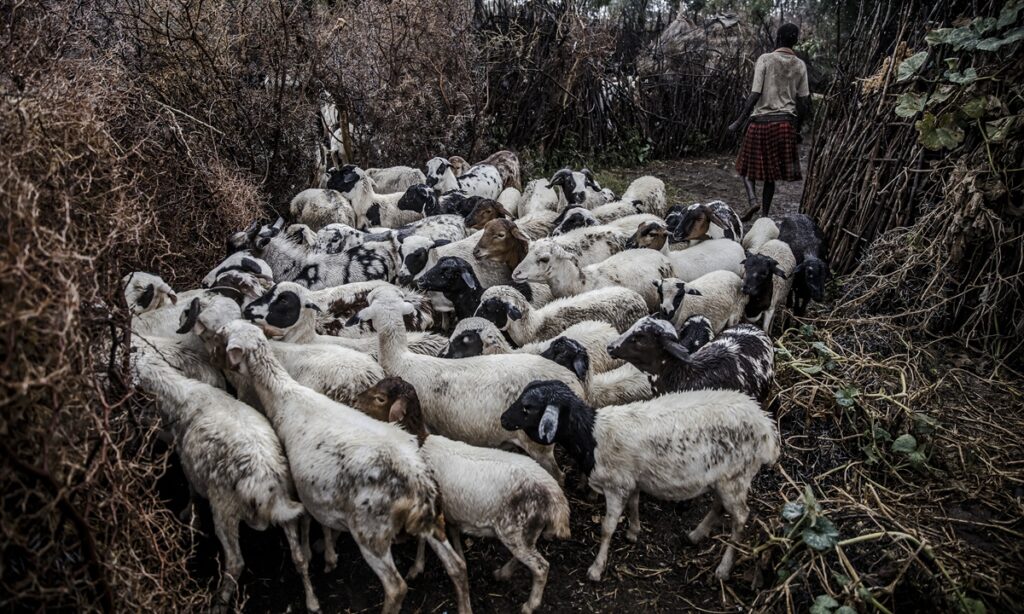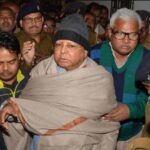Red tape, conflict stop Uganda’s herdsmen from moving to cope with climate change
Elder Loit Paul Lobunei gazed west across the parched plains of Karamoja in northeastern Uganda. “The water has gone to the lake,” he said – and it was time for him to follow.
When the dry season sets in, cattle-keepers like Lobunei prepare to drive their herds across the region toward dams or other distant water bodies, negotiating access with communities they find along the way.
The time-honored practice helps local people – known to outsiders as the Karamojong – survive in a harsh environment where rainfall patterns were already volatile from one year to the next before climate change made them even more erratic.
But nowadays it is becoming harder for herders to make their seasonal migration, as shrinking access to common land, resurgent insecurity and the deepening presence of the state have made negotiations over resources more formal.
Some herders and activists say an overreaching government is undermining the viability of cattle-keeping and pushing them to rely on crop farming, which is vulnerable to drought and floods.
In his home district of Nakapiripirit, Lobunei said he is increasingly hemmed in by large farms that are off-limits to his cows and has to skirt around a wildlife reserve that used to let herders through a few decades ago.
He must also seek written permission from a growing number of government officials who regulate movement across the grasslands where his forefathers once grazed their cattle freely.
“Are we the Karamojong – or is it the government which is the Karamojong?” he pondered.
‘Rapid transformation’
A 2017 report by the Ugandan government and partner agencies noted that since 1981 Karamoja has seen more extended dry spells and more frequent bursts of heavy rain.
And in the future, it warned, a warming planet will make the area’s rainfall “more unpredictable, unreliable and intense.”
Locals report the seasons have shifted, so that the names of the months no longer correspond to the natural events they describe.
The month of “lomaruk,” for example, is named after white mushrooms that used to sprout in March but now appear months later.
Historically, the region’s herders could adapt by moving their animals, negotiating access to water and pasture via a mechanism called etamam, or “sending a message,” said Emmanuel Tebanyang, a policy analyst at the Karamoja Development Forum (KDF), a civil society group.
Elders first hold a series of clan meetings to decide whether to migrate that season, after which scouts are dispatched to seek possible grazing areas. If a host community offers a welcome, a bull will be slaughtered as a sign of peace.
But etamam is undergoing “rapid transformation,” said Tebanyang, as discussions are increasingly conducted through local government officials, who must provide written permission before migration can begin.
The state has sought to control and document movement in Karamoja since colonial times, but in recent decades pastoralists say its presence has become more entrenched.
“This is a new culture where everything is done by the government,” said Alex Lemu Longoria, who as a Karamojong elder and former mayor of Moroto town has worked in both traditional and official systems.
There are now nine districts in Karamoja, up from four in 2005. The carving out of new districts and sub-counties means herders need authorization from a larger array of officials before they can move across boundaries.
Another barrier is a new wave of armed cattle-raiding since 2019, as guns have flowed over the border from neighboring Kenya and South Sudan, making herders more fearful and the authorities stricter.
Karamoja police spokesperson Michael Longole said herders have “a free-range system of movement,” but the authorities have slapped “a lot of restrictions” on traders transporting cattle across districts.
Power shifts
One attempt to bridge the gap between grassroots dialogue and formal processes is the creation of “peace” and “resource-sharing” committees made up of community representatives, said Denis Pius Lokiru, a program manager at international aid agency Mercy Corps.
The organization has supported the signing of four agreements in Karamoja since 2019, which were witnessed by government officials and incorporated into local bylaws.
“These agreements were clearly putting out the modalities on how best water and other natural resources can be shared peacefully without causing any conflict,” Lokiru said.
The new committees also include more youth and women, said Cecilia Dodoi, vice chair of the Kotido Women’s Peace Forum.
“There is now a great change because our voices are listened to,” she said, adding many of the women are widows who can testify to the consequences of conflict.
But Tebanyang of the KDF wonders whether written agreements are aimed at herders on the grasslands or bureaucrats in offices.
More crops, less cattle
While pastoralism continues to evolve in Uganda, President Yoweri Museveni has promoted sedentary farming in Karamoja.
On a 2019 visit, he insisted “everybody must be engaged in modern commercial agriculture,” which he argues is more productive.
Although many of Karamoja’s 1.2 million people have long practiced agropastoralism – combining cattle-keeping with small-scale crop farming – research shows they have been leaning more heavily on agriculture over the past two decades.
Analysis of satellite data by researchers at the University of Maryland showed a four-fold increase in the area under cultivation between 2000 and 2011. And a 2018 study by the Karamoja Resilience Support Unit, a research group, found that nearly 60 percent of households no longer own enough livestock to provide an adequate food supply.
But local observers warn against an unbalanced focus on crops in an era of accelerating climate change impacts.
A goat herd belonging to a Karamojong family gather under the rain at a village in Rupa, Uganda near the Kenya-Uganda border on January 29, 2020. Photo: AFP




